-
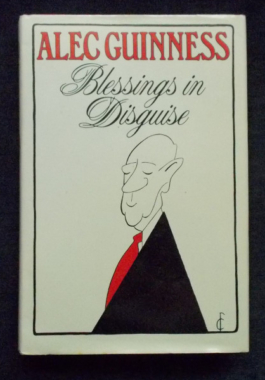 This is not a tell-all exercise in egomania - rather, it is a witty, entertaining account of the people Alec Guiness knew and often worked with, caught for posterity in brilliant pen portraits. The reader will meet Ralph Richardson, Sybil Thorndike, Tyrone Guthrie and John Geilgud. Edith Sitwell presides at the Sesame Club and reconciled to the Catholic Church, and for the occasion Evelyn Waugh dressed in black and white dog-tooth tweeds, a red tie and a boater with red and blue ribbons; Vivien Leigh charms a susceptible admiral in North Africa; Ernest Hemingway is underwhelmed by Noel Coward; and of course, Alex Guinness himself - on his film career, religious beliefs and war experiences, told with modesty, timing, humour and humanity.
This is not a tell-all exercise in egomania - rather, it is a witty, entertaining account of the people Alec Guiness knew and often worked with, caught for posterity in brilliant pen portraits. The reader will meet Ralph Richardson, Sybil Thorndike, Tyrone Guthrie and John Geilgud. Edith Sitwell presides at the Sesame Club and reconciled to the Catholic Church, and for the occasion Evelyn Waugh dressed in black and white dog-tooth tweeds, a red tie and a boater with red and blue ribbons; Vivien Leigh charms a susceptible admiral in North Africa; Ernest Hemingway is underwhelmed by Noel Coward; and of course, Alex Guinness himself - on his film career, religious beliefs and war experiences, told with modesty, timing, humour and humanity. -

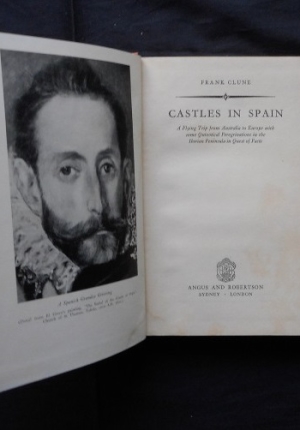 Frank Clune, Australia's answer to H.V. Morton, makes a flying trip from Australia to Europe with some 'Quixotical' peregrinations in the Iberian Peninsula in quest of facts. And so he does - accompanied by his wife now that the boys are more than old enbough to be left on their own. No trip to Spain in 1952 would have been complete without a bull fight, but the Clunes also look into many out-of- way and off-the-tourist-track places. With black and white photographs.
Frank Clune, Australia's answer to H.V. Morton, makes a flying trip from Australia to Europe with some 'Quixotical' peregrinations in the Iberian Peninsula in quest of facts. And so he does - accompanied by his wife now that the boys are more than old enbough to be left on their own. No trip to Spain in 1952 would have been complete without a bull fight, but the Clunes also look into many out-of- way and off-the-tourist-track places. With black and white photographs. -

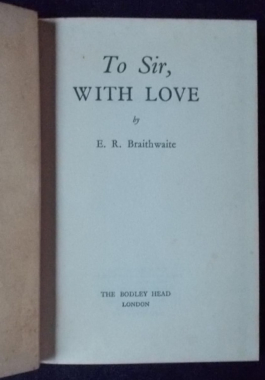 The autobiographical tale of Rick Braithwaite's battle to find work in post-war London. A trained engineer, he could only find work as a teacher. When a woman refuses to sit next to him on the bus, Braithewaite is saddened and angered by her prejudice. In cosmopolitan London, he had hoped for a more enlightened attitude. When he begins his first teaching job in a tough East End school he finds the same hostile prejudice. Yet slowly and painfully, the barriers begin to break. He shames his pupils, wrestles with them, enlightens them and eventually comes to love them - as they come to love and respect him. To Sir With Love is the story of a dedicated teacher who turns hate into love, teenage rebelliousness into energetic self-respect, contempt into consideration for others - the story of a man's own integrity winning through against all the odds.
The autobiographical tale of Rick Braithwaite's battle to find work in post-war London. A trained engineer, he could only find work as a teacher. When a woman refuses to sit next to him on the bus, Braithewaite is saddened and angered by her prejudice. In cosmopolitan London, he had hoped for a more enlightened attitude. When he begins his first teaching job in a tough East End school he finds the same hostile prejudice. Yet slowly and painfully, the barriers begin to break. He shames his pupils, wrestles with them, enlightens them and eventually comes to love them - as they come to love and respect him. To Sir With Love is the story of a dedicated teacher who turns hate into love, teenage rebelliousness into energetic self-respect, contempt into consideration for others - the story of a man's own integrity winning through against all the odds. -
 Even if the six daughters of the charming, eccentric David, Lord Redesdale and his wife Sydney - born between 1904 and 1920 - had been quite ordinary, they were born into one of the most traumatic centuries of British history. The status to which they were born would have made interesting reading on its own, but Nancy, Pamela, Diana, Unity, Decca and Debo - known as the mad, mad Mitfords - were far from ordinary. The true story behind the gaiety and frivolity of the six Mitford daughters is as sensational as a novel. Nancy: her bright social existence masked a doomed obsessional love, which soured her success; Pam: a countrywoman married to one of the finest brains in Europe; Diana: an iconic beauty, married, and at 22, fell in love with Oswald Moseley, leader of the British fascists; Unity: she was romantically in love with Hitler and became a member of his inner circle before shooting herself in the temple when World War II was declared; Jessica: the family rebel, who declared herself a Communist in the schoolroom; and Debo: she became the Duchess of Devonshire. The author was given exclusive access to the Mitford archives. Illustrated with black and white photographs.
Even if the six daughters of the charming, eccentric David, Lord Redesdale and his wife Sydney - born between 1904 and 1920 - had been quite ordinary, they were born into one of the most traumatic centuries of British history. The status to which they were born would have made interesting reading on its own, but Nancy, Pamela, Diana, Unity, Decca and Debo - known as the mad, mad Mitfords - were far from ordinary. The true story behind the gaiety and frivolity of the six Mitford daughters is as sensational as a novel. Nancy: her bright social existence masked a doomed obsessional love, which soured her success; Pam: a countrywoman married to one of the finest brains in Europe; Diana: an iconic beauty, married, and at 22, fell in love with Oswald Moseley, leader of the British fascists; Unity: she was romantically in love with Hitler and became a member of his inner circle before shooting herself in the temple when World War II was declared; Jessica: the family rebel, who declared herself a Communist in the schoolroom; and Debo: she became the Duchess of Devonshire. The author was given exclusive access to the Mitford archives. Illustrated with black and white photographs. -
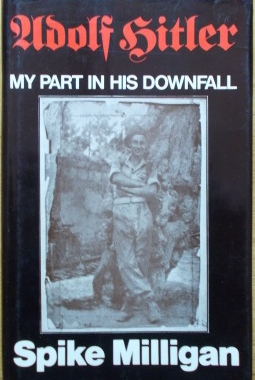 Milligan takes his unwary reader from the outbreak of war in 1939 - 'it must have been something we said' - through his attempts to avoid enlistment - 'time for my appendicitus, I thought' - and his gunner training in Bexhill -'There was one drawback. No ammunition' - to the landing at Algiers in 1943 'I closed my eyes and faced the sun. I fell down a hatchway.' And of course, his mission to cause Hitler's downfall...'At Victoria station the R.T.O. gave me a travel warrant, a white feather and a picture of Hitler marked "This is your enemy". I searched every compartment, but he wasn't on the train...' Loads of bathos, pathos and gales of ribald laughter, this is a barely sane helping of military goonery and superlative Milliganese.
Milligan takes his unwary reader from the outbreak of war in 1939 - 'it must have been something we said' - through his attempts to avoid enlistment - 'time for my appendicitus, I thought' - and his gunner training in Bexhill -'There was one drawback. No ammunition' - to the landing at Algiers in 1943 'I closed my eyes and faced the sun. I fell down a hatchway.' And of course, his mission to cause Hitler's downfall...'At Victoria station the R.T.O. gave me a travel warrant, a white feather and a picture of Hitler marked "This is your enemy". I searched every compartment, but he wasn't on the train...' Loads of bathos, pathos and gales of ribald laughter, this is a barely sane helping of military goonery and superlative Milliganese. -
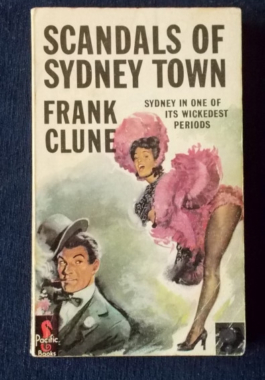 Contains the legal cases that packed the court rooms with Sydneysiders eager for sensation: The Mount Rennie Case - The gang rape of a 16 year old girl by the larrikin gang members of the Waterloo Push. The Case of Ernest Buttner: Ernest Buttner, a quiet German boarding house keeper was almost hanged for rape. The Dean Case - Did a respectable young man, a ferry boat Captain, try to poison his young wife? The Coningham Conspiracy - A dashing Australian Test cricketing hero, his beautiful aristocratic English wife, adultery, blackmail and the unlikely main participant who was an Irish Catholic priest who was in line to become the next Cardinal of Sydney’s St Mary’s Cathedral. The Land Scandals - In which W. N. Willis, Charles Bath and W.P. Crick himself are charged with conspiracy to defraud. The Careers of W. P. Crick and R. D. Meagher.
Contains the legal cases that packed the court rooms with Sydneysiders eager for sensation: The Mount Rennie Case - The gang rape of a 16 year old girl by the larrikin gang members of the Waterloo Push. The Case of Ernest Buttner: Ernest Buttner, a quiet German boarding house keeper was almost hanged for rape. The Dean Case - Did a respectable young man, a ferry boat Captain, try to poison his young wife? The Coningham Conspiracy - A dashing Australian Test cricketing hero, his beautiful aristocratic English wife, adultery, blackmail and the unlikely main participant who was an Irish Catholic priest who was in line to become the next Cardinal of Sydney’s St Mary’s Cathedral. The Land Scandals - In which W. N. Willis, Charles Bath and W.P. Crick himself are charged with conspiracy to defraud. The Careers of W. P. Crick and R. D. Meagher. -
 The author, director of the Mood Disorders Program at Tufts University Medical Center, draws from the careers and personal plights of such notable leaders as Lincoln, Churchill, Gandhi, Martin Luther King, Jr., JFK, and others from the past two centuries to build an argument that the very qualities that mark those with mood disorders - realism, empathy, resilience, and creativity - also make for the best leaders in times of crisis. By combining analysis of the historical evidence with the latest psychiatric research, Ghaemi demonstrates how he thinks these qualities have produced brilliant leadership under the toughest circumstances.individuals and society at large-however high the price for those who endure these illnesses.
The author, director of the Mood Disorders Program at Tufts University Medical Center, draws from the careers and personal plights of such notable leaders as Lincoln, Churchill, Gandhi, Martin Luther King, Jr., JFK, and others from the past two centuries to build an argument that the very qualities that mark those with mood disorders - realism, empathy, resilience, and creativity - also make for the best leaders in times of crisis. By combining analysis of the historical evidence with the latest psychiatric research, Ghaemi demonstrates how he thinks these qualities have produced brilliant leadership under the toughest circumstances.individuals and society at large-however high the price for those who endure these illnesses. -
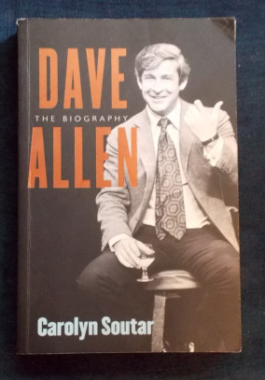
Dave Allen: Carolyn Soutar
$10.00The image of Dave Allen is seared into our minds: seated on a tall chair with a glass of J&B, smoking his Gauloises, a fingertip missing as he tells the most hilarious, irreverent stories. But who was the man behind the image? Having worked with him as his tour manager, Carolyn Soutar was able to see how he behaved both on and off screen. Here she discusses the Irish Catholic upbringing that brought him so much anger, which he was able to turn to humour, how he toured with the Beatles in the sixties and became a huge TV star in the following decades. This biography is the most revealing account of the famously private comedian, whose career began in the sixties but who remained influential to a whole new generation of comics in the 21st century.



